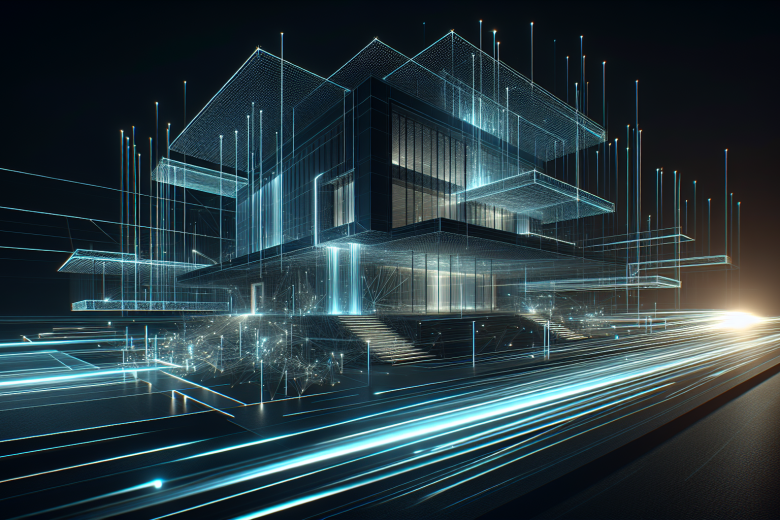Architectural Visualization: Redefining the Future of Design Through Computer Graphics

Architecture is no longer constrained to the physical realm. Today, it transcends bricks and mortar, evolving into digital masterpieces crafted through the marriage of creativity and technology. At the heart of this transformation lies architectural visualization—a powerful facet of the computer graphics (CG) industry that has revolutionized how architects, clients, and stakeholders conceive, communicate, and experience designs.
In an era where immersive worlds beckon, architectural visualization serves as the bridge from imagination to tangible virtual reality. It transforms blueprints into breathtaking visuals, offering unmatched clarity and emotional resonance. This article explores the profound impact of architectural visualization within the CG industry, offering practical insights that empower professionals and enthusiasts to elevate their craft.
Why Architectural Visualization is a Game-Changer in Computer Graphics
Architectural visualization leverages CG to create realistic renderings and animations of buildings before they exist. It is an essential tool to:
– Increase client understanding and engagement.
– Shorten design iterations with immediate visual feedback.
– Facilitate impactful presentations that differentiate firms in competitive markets.
– Bridge disciplines by integrating architecture, animation, and multimedia storytelling.
The scale of its influence extends globally, reshaping not only architectural design but also aspects of advertising and the broader business of CG. With architecture as a core domain powered by CG, visualization immerses viewers in spatial experiences, evoking emotional connections to spaces yet to be built.
Essential Components of Effective Architectural Visualization
Successful architectural visualizations are crafted through a synergy of art and technology. Below are foundational elements every professional should master:
| Component | Description | Impact |
|————————|—————————————————————————–|———————————–|
| 3D Modeling | Creation of accurate geometric representations of architectural designs | Foundation for realism and detail |
| Texturing & Materials | Simulation of surface qualities like brick, glass, and wood | Enhances tactile authenticity |
| Lighting & Shadows | Digital recreation of natural and artificial light sources | Sets mood and depth perception |
| Animation & Walkthroughs | Dynamic camera movements to simulate human perspective | Engages users in immersive tours |
| Post-Processing | Refinement via color grading, effects, and compositing | Adds polish and cinematic quality |
Mastery in these domains creates visuals that are not only precise but emotionally resonant. It invites clients and viewers to inhabit the future space, stimulating excitement and confidence.
Integrating Animation and Multimedia to Elevate Architectural Storytelling
The fusion of animation with architectural visualization has unlocked new storytelling dimensions. Static images give way to fluid narratives, enabling architects to express spatial functions, user interactions, and environmental context dynamically.
Multimedia integration—soundscapes, interactive elements, virtual and augmented reality—further empowers the audience to explore designs intuitively. Imagine prospective occupants wandering a virtual lobby, hearing ambient environmental sounds, or toggling between design iterations with ease. These immersive experiences harness the psychology of engagement, fostering deeper understanding and emotional ties.
Practical applications include:
– Client presentations featuring guided virtual tours.
– Marketing campaigns using high-impact animated sequences.
– Educational tools for architecture students blending theory and practice.
– Public consultations allowing interactive feedback on urban development projects.
This blend amplifies architectural communication, blurring boundaries between design, animation, multimedia, and advertising.
Essential Tools and Software in Architectural Visualization
Choosing the right CG tools accelerates workflow and enhances quality. Professionals often combine several applications to harness their unique strengths:
| Software | Primary Use | Notable Features |
|——————–|——————————–|———————————————|
| Autodesk 3ds Max | Advanced 3D modeling & rendering | Extensive plugins, robust animation tools |
| SketchUp | Rapid conceptual modeling | Intuitive interface, strong community |
| Lumion | Real-time rendering | Speed, rich effects library |
| Unreal Engine | Interactive VR environments | Real-time ray tracing, immersive renders |
| Adobe After Effects | Post-processing and compositing | Motion graphics, visual effects integrations |
Selecting tools depends on project scope, desired output, and team expertise. Staying attuned to evolving software capabilities ensures practitioners remain at the forefront of CG innovation.
Best Practices for Crafting Captivating Architectural Visualizations
To rise above the noise in a saturated market, architectural visualizations must be purposeful, coherent, and aesthetically compelling. Consider these actionable guidelines:
– **Begin with Conceptual Clarity:** Align visualization goals with client needs. Understand emotions or narratives the design should evoke.
– **Prioritize Realism and Accuracy:** Use precise measurements, textures, and lighting consistent with the project’s context.
– **Balance Detail and Focus:** Highlight key design features; avoid clutter that distracts or overwhelms.
– **Employ Storytelling Techniques:** Frame visuals to convey sequence, user experience, and spatial flow.
– **Optimize for Platforms:** Tailor resolution, formats, and interactivity to where the visualization will appear—web, VR, presentations, or print.
– **Solicit Feedback Iteratively:** Share drafts with diverse stakeholders to refine based on aesthetic and practical input.
This disciplined approach elevates visualization from mere technical renderings to engaging visual narratives that inspire trust and enthusiasm.
The Business of Computer Graphics Through Architectural Visualization
Architectural visualization is not just a creative pursuit; it is a lucrative segment within the business of computer graphics (CG). Firms that excel blend artistic expertise with strategic market positioning. Some proven business strategies include:
– **Niche Specialization:** Focus on sectors such as residential, commercial, or cultural heritage projects to build reputation and repeat clients.
– **Collaborative Partnerships:** Connect with architects, interior designers, and advertising agencies to offer integrated multimedia services.
– **Showcase a Diverse Portfolio:** Display varying styles and media formats including animation, still renders, and virtual immersive experiences.
– **Invest in Continuous Learning:** Adopt emerging technologies (e.g., real-time ray tracing, AI-driven asset creation) to deliver cutting-edge solutions.
– **Leverage Social Media and Online Platforms:** Share compelling visuals to attract global clients and collaborations.
Navigating this business landscape requires sharp awareness of market trends and client expectations. It is equally an art and strategy, where visual excellence fuels growth and impact.
Future Trends Shaping Architectural Visualization in CG
The fusion of technology and creativity in architectural visualization is accelerating. Emerging trends to watch and engage with:
– **Artificial Intelligence and Machine Learning:** Automating repetitive tasks, optimizing rendering, and generating complex materials rapidly.
– **Photorealistic Real-Time Rendering:** Empowering instantaneous visual adjustments for immediate design evaluation.
– **Mixed Reality and Haptics:** Bringing tactile feedback and blend of virtual and physical interaction to design walkthroughs.
– **Sustainability Visualization:** Highlighting green building performance through dynamic environmental simulations.
– **Cross-Disciplinary Integration:** Merging animation, multimedia storytelling, advertising, and architectural visualization into holistic experiences.
Remaining nimble and proactive about these developments will empower visualization experts to shape the future narrative of architecture through computer graphics.
Summary: Empowering Creativity at the Intersection of Architecture and CG
Architectural visualization stands at a vibrant crossroads of CG disciplines—animation, multimedia, advertising, and the business of computer graphics. It challenges creators to harness precision, aesthetics, and immersive storytelling, crafting worlds that exist first in the imagination and then in digital reality.
For professionals and enthusiasts alike, success hinges on mastering both technical tools and narrative techniques. It calls for a visionary mindset, an artistic soul, and a practical strategy to thrive in a rapidly evolving industry. By embracing innovation while honing timeless design principles, the architectural visualization community can continue to inspire, engage, and transform the way we envision our built environment.
In the words of architect Frank Gehry, “Architecture should speak of its time and place, but yearn for timelessness.” Through computer graphics, this timeless yearning now finds vibrant expression in vivid, immersive virtual realms.

